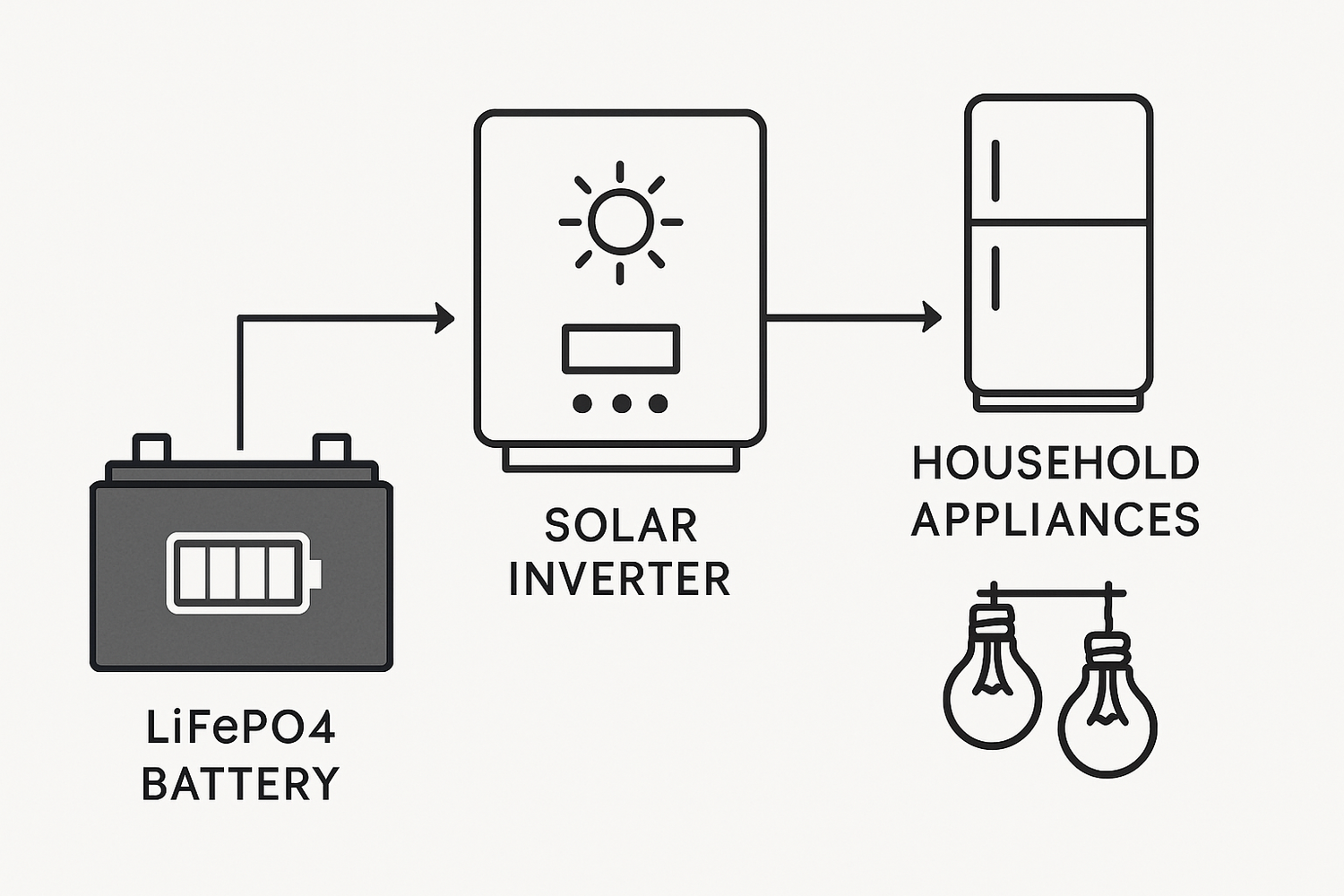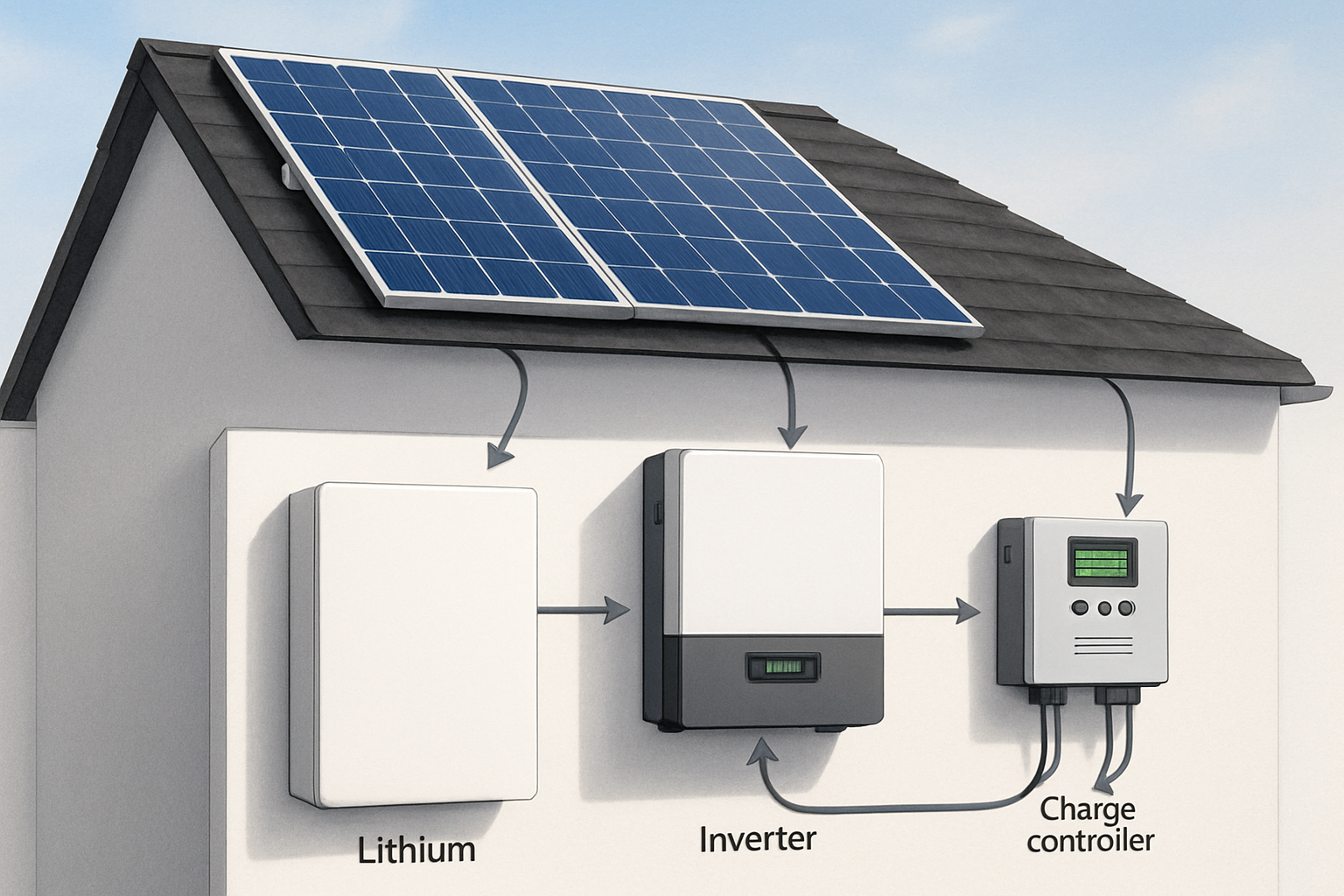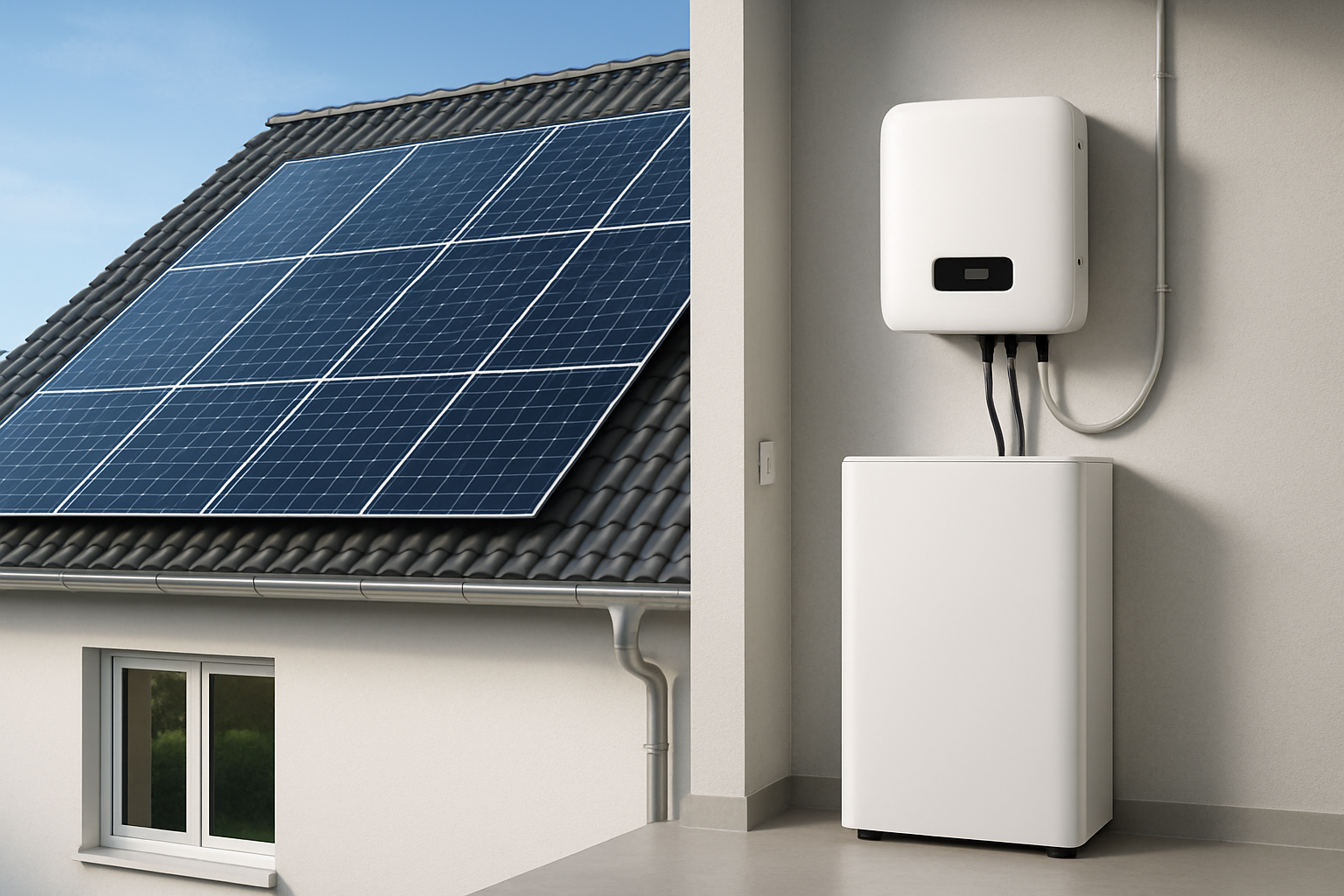In an off-grid solar kit, the inverter and the LiFePO4 battery are the core components responsible for delivering stable power. The battery stores energy, and the inverter converts it from Direct Current (DC) to Alternating Current (AC) to run your appliances. Their compatibility is not just a technical detail—it is fundamental to your system's performance, safety, and overall efficiency. A mismatched pair can lead to wasted energy, premature component failure, and an unreliable power supply, undermining the goal of energy independence.
Why Compatibility Between Your Inverter and LiFePO4 Battery is Crucial
Achieving a seamless connection between your inverter and battery is essential for a high-performing off-grid solar kit. This synergy affects everything from daily power output to the long-term health of your investment.
Maximizing System Efficiency and Performance
An inverter that is not correctly sized for its battery bank will operate outside its ideal efficiency curve, leading to significant energy loss. For instance, a large inverter running very small loads has a high self-consumption, draining the battery without doing much useful work. Proper matching ensures the inverter operates at peak efficiency, converting stored DC energy into usable AC power with minimal waste. This is critical for getting the most out of every amp-hour stored in your LiFePO4 battery.
Ensuring Safety and Longevity
A well-matched inverter works in harmony with the battery's built-in Battery Management System (BMS). The BMS is the battery’s safeguard, protecting it from over-charging, over-discharging, and extreme temperatures. A compatible inverter will respect the voltage and current limits set by the BMS, preventing stress on the battery cells. According to the International Energy Agency (IEA), integrated controls for solar PV and energy storage are key to system stability and reliability. This prevents damage that can shorten the battery's lifespan, which is a significant concern as LiFePO4 batteries are a major investment.
Avoiding Costly Mistakes
The initial cost of an off-grid solar kit is substantial. Choosing incompatible components from the start can lead to cascading failures. An undersized inverter can be damaged by high-surge appliances, while an oversized one wastes energy. An incorrect charging profile from the inverter can permanently damage a LiFePO4 battery bank. Proper solar inverter compatibility ensures that each component works as intended, protecting your investment and avoiding the expense of premature replacements.
Key Technical Specifications for Matching
To ensure your inverter and LiFePO4 battery work together flawlessly, you must align their core technical specifications. These parameters form the foundation of a stable and efficient off-grid solar kit.
Voltage Compatibility: The First Checkpoint
The most fundamental requirement is matching the inverter's DC input voltage with the nominal voltage of your LiFePO4 battery bank. Off-grid systems are typically configured in 12V, 24V, or 48V systems. A 24V battery bank requires a 24V inverter. Mismatching these values will prevent the system from operating and could damage the components. Higher voltage systems (like 48V) are generally more efficient for larger loads because they allow for smaller, less expensive wiring over longer distances.
| System Voltage | Typical Application | Advantage |
|---|---|---|
| 12V | Small cabins, RVs, mobile applications | Simple, wide availability of 12V appliances |
| 24V | Medium-sized off-grid homes, workshops | More efficient than 12V, handles larger loads |
| 48V | Large homes, farms, light commercial | Highest efficiency, supports large inverters and long wire runs |
Continuous and Surge Power Ratings
An inverter has two power ratings: continuous and surge. Continuous power is the wattage it can supply consistently. Surge power is the higher wattage it can provide for a few seconds to start motors in appliances like refrigerators, pumps, or power tools. To select the right inverter, sum the wattage of all appliances you plan to run simultaneously. Choose an inverter with a continuous rating at least 20-25% higher than this total to provide a safety margin. Also, check the surge requirements of your largest motorized appliance and ensure the inverter's surge rating can handle it.
Inverter Waveform: Pure Sine Wave is a Must
Inverters produce either a modified sine wave or a pure sine wave. For systems with LiFePO4 batteries powering modern electronics, a pure sine wave (PSW) inverter is the only suitable choice. PSW output is a clean, smooth electrical signal identical to grid power, ensuring that sensitive electronics like laptops, TVs, and medical equipment run correctly and without risk of damage. Modified sine wave inverters produce a blocky, stepped output that can cause buzzing, overheating, and permanent damage to many modern devices.
The Role of the Battery Management System (BMS)
The BMS is the intelligent component of a LiFePO4 battery. It is not just a feature but a critical safety and performance-enhancing system that must be considered when matching it with an inverter.
The Guardian of Your LiFePO4 Battery
The primary function of a BMS is to protect the battery cells. It monitors voltage, current, and temperature, disconnecting the battery if any parameter goes outside safe limits. This prevents catastrophic failures from over-charging, deep discharging, or short circuits. A quality BMS ensures each cell in the battery pack is balanced, meaning they all charge and discharge evenly, which is vital for maximizing the battery's cycle life.
Communication Protocols: The Key to Synergy
Advanced off-grid systems feature inverters and batteries that can communicate directly. This 'closed-loop' communication, often via CAN or RS485 protocols, allows the inverter to receive real-time data from the BMS. The inverter can then dynamically adjust its charging and discharging parameters based on the battery’s state of charge, temperature, and health. This active management optimizes performance far beyond what is possible with a non-communicating setup. A deeper look at these metrics, as detailed in the Ultimate Reference for Solar Storage Performance, shows how this synergy directly impacts round-trip efficiency and system longevity.
A Practical Sizing Guide: Step-by-Step
Properly sizing your inverter and LiFePO4 battery requires a methodical approach. Follow these steps to design a system that meets your specific energy needs.
Step 1: Conduct an Energy Audit
First, calculate your daily energy consumption. Create a list of every AC appliance you intend to power. For each one, note its power consumption in watts and estimate how many hours it will run per day. Multiply the watts by the hours for each appliance to get its daily watt-hours (Wh). Sum the Wh for all appliances to find your total daily energy requirement.
Step 2: Sizing Your LiFePO4 Battery Bank
Use your total daily watt-hours to size the battery bank. Divide the total Wh by your system's nominal voltage (12, 24, or 48) to get the required daily amp-hours (Ah). For example, 3000Wh per day in a 24V system requires 125Ah (3000 / 24 = 125). Factor in days of autonomy—the number of days you want the system to run without sun. For two days of autonomy, you would need a 250Ah battery bank. LiFePO4 batteries can be safely discharged to 80-100%, so you do not need to oversize them as much as traditional lead-acid batteries.
Step 3: Selecting the Right Inverter
Your energy audit also informs your inverter choice. The inverter's continuous power rating must exceed the total wattage of all appliances you might run at the same time. Check the starting wattage (surge) of your largest appliance—often a well pump or refrigerator—and ensure the inverter's surge rating is sufficient. Finally, confirm the inverter's DC input voltage matches your battery bank's voltage and that it is a pure sine wave model.
Building a Cohesive and Reliable Power System
Matching your inverter and LiFePO4 battery is more than a technical exercise; it is the foundation of a reliable and efficient off-grid solar kit. By carefully aligning voltage, sizing power ratings based on a thorough energy audit, and prioritizing pure sine wave technology, you create a system where components work together seamlessly. The growing adoption of energy storage, which the U.S. Energy Information Administration (EIA) reports has expanded significantly, underscores the importance of getting these details right. As organizations like IRENA highlight, reliable off-grid solutions are critical for energy access and resilience. A properly matched system not only delivers dependable power but also protects your investment, ensuring you can enjoy the benefits of energy independence for years to come.
Frequently Asked Questions
Can I use any inverter with a LiFePO4 battery?
It is not recommended. You need an inverter with charging profiles specifically designed for lithium chemistry. A pure sine wave inverter is also critical for protecting your electronics. The best inverters have adjustable voltage setpoints to align perfectly with the battery's BMS for optimal charging and longevity.
What happens if my inverter is too small?
An undersized inverter will frequently trip its overload protection if you attempt to run appliances that exceed its continuous power rating. It will fail to start devices with high surge requirements, such as motors in pumps or refrigerators, making your power system unreliable and impractical.
What happens if my inverter is too big?
A significantly oversized inverter can be inefficient. All inverters have a self-consumption, or tare loss, which is the power they draw just to remain operational. If your typical loads are very small compared to the inverter's capacity, this standby power can become a significant drain on your battery bank over time. However, slight oversizing (20-30%) is often recommended to accommodate future system expansion.
Do I need a special charger for my LiFePO4 battery in an off-grid system?
Yes. Both your solar charge controller and the charging function within a hybrid inverter must have a specific LiFePO4 charging profile or a customizable profile. Using charging algorithms designed for lead-acid batteries can damage a LiFePO4 battery by overcharging it, which can shorten its lifespan and create safety risks.





Leave a comment
All comments are moderated before being published.
This site is protected by hCaptcha and the hCaptcha Privacy Policy and Terms of Service apply.